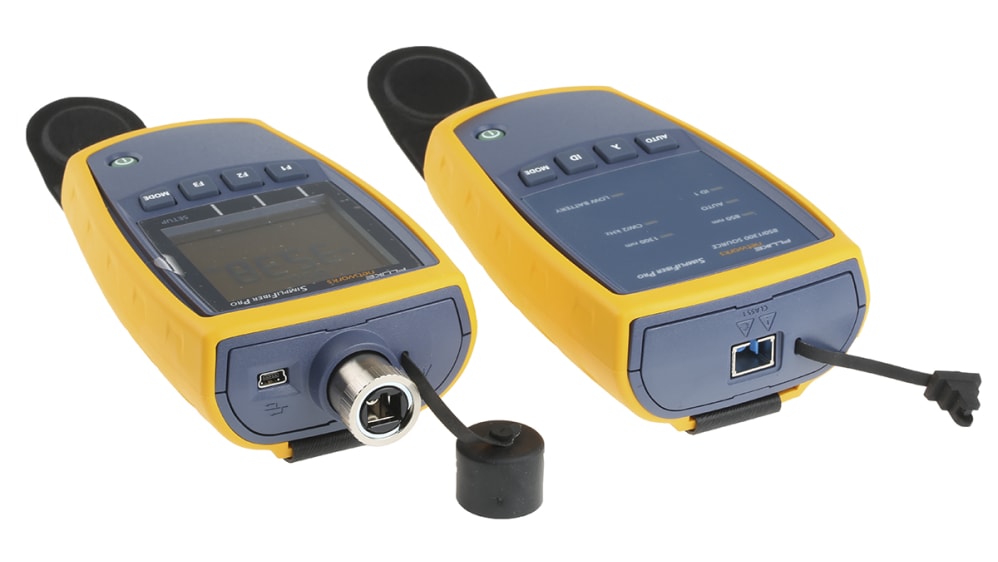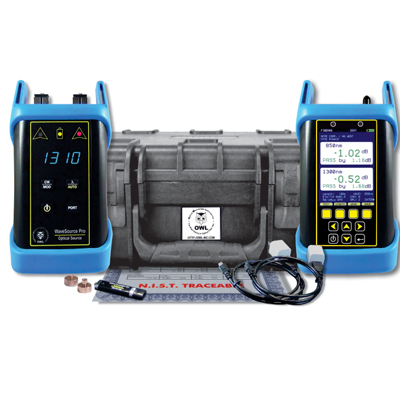Exploring Advanced Techniques in Fiber Measurement and Their Industry Impact
In today's fabric industry, accurate fiber measurement is vital for enhancing manufacturing procedures and meeting sustainability goals. With the rise of innovative imaging and analytical devices, you can get much deeper understandings right into fiber structure and make-up. This change not just boosts performance yet additionally aligns with industry standards. As these advanced techniques evolve, you could ask yourself just how they can better change making methods and influence the future of fabrics.
The Relevance of Accurate Fiber Measurement in Textile Manufacturing

Innovative Imaging Technologies for Fiber Analysis
When it comes to fiber analysis, innovative imaging technologies are game changers. High-resolution microscopy strategies and spectroscopic evaluation approaches give you with thorough understandings right into fiber framework and structure. These improvements not just improve accuracy but additionally streamline your dimension procedures.
High-Resolution Microscopy Techniques
High-resolution microscopy strategies have actually reinvented fiber analysis, allowing researchers to envision fibers at extraordinary degrees of detail. With techniques like scanning electron microscopy (SEM) and transmission electron microscopy (TEM), you can observe fiber morphology, surface functions, and cross-sections with amazing clearness. These strategies allow you to distinguish in between different fiber types and analyze their architectural integrity. You'll find that high-resolution imaging helps recognize flaws, inclusions, and various other essential qualities that can influence product efficiency. Additionally, advancements in electronic imaging software application have boosted picture handling, making it much easier to evaluate and translate data. By taking on these innovative methods, you can drive greater accuracy in fiber measurement and add to developments in numerous markets, from fabrics to composites.
Spectroscopic Evaluation Methods
Spectroscopic evaluation methods have become powerful tools for fiber characterization, giving insights that match high-resolution microscopy. You can utilize methods like infrared (IR) spectroscopy, which aids determine the chemical make-up of fibers by measuring molecular vibrations. Raman spectroscopy uses an additional layer of detail, enabling you to assess molecular structures through spreading of single light. These methods not only improve your understanding of fiber residential properties but additionally enable the detection of pollutants and architectural variants. By incorporating spectroscopic strategies with standard microscopy, you obtain a more comprehensive sight of fibers' physical and chemical features, improving your research accuracy. Ultimately, these developments can significantly influence material choice and top quality control in numerous sectors.
Advanced Analytical Devices and Their Applications
As you discover the domain name of fiber dimension, you'll uncover that innovative logical devices play an essential role in improving accuracy and effectiveness. Techniques like high-performance liquid chromatography (HPLC) and gas chromatography (GC) allow you to analyze fiber make-up with remarkable precision. These tools enable you to identify specific parts and impurities, making certain top quality control in your products.Additionally, making use of scanning electron microscopy (SEM) offers you an in-depth view of fiber framework, assisting you comprehend how various therapies influence efficiency. Modern software program likewise improves data evaluation, making Recommended Reading it much easier to interpret complex outcomes and work together across groups.

Influence of Fiber Measurement on Production Performance
While accurate fiber dimension may feel like a small information, it considerably affects production effectiveness in the fabric industry. When go to my site you spend in exact fiber measurement methods, you can maximize resources usage and decrease waste. This leads to much better resource allocation, enabling you to generate top quality materials without excessive using resources.By understanding fiber qualities, you can tailor manufacturing procedures to specific materials, improving your operations and reducing downtime. For circumstances, knowing the precise tensile stamina of fibers allows you readjust machinery settings for optimum performance. This not only quickens production however additionally assures regular item quality.Moreover, exact fiber dimension helps you determine problems early in the assembly line, protecting against pricey reworks and hold-ups (fibre testing equipment). Generally, implementing advanced fiber measurement strategies streamlines procedures, enhances performance, and inevitably raises productivity. In today's competitive market, every detail counts, and specific fiber measurement is a game-changer
Sustainability Factors To Consider in Fiber Assessment Techniques
When you evaluate fiber, it's essential to consider lasting techniques that can decrease ecological effect. Utilizing environment-friendly measurement methods and reducing waste in your evaluations can significantly enhance your overall sustainability. In addition, incorporating lifecycle analysis into your techniques can give a more clear picture of your fiber's environmental impact.
Eco-Friendly Measurement Techniques
Considering the expanding need for sustainability in various industries, taking on environment-friendly measurement approaches for fiber evaluation has actually ended up being vital. You can start by using non-toxic solvents and eco-friendly products in your screening processes. These alternatives not only reduce environmental impact yet also boost security for your group. Executing electronic measurement strategies can even more minimize waste, as they commonly require fewer physical examples and resources. Furthermore, leveraging innovative innovations like near-infrared spectroscopy can generate accurate results without harmful chemicals. By picking these greener methods, you add to an extra sustainable future while preserving high criteria in fiber quality. Inevitably, incorporating environmentally friendly techniques into your fiber assessment not just straightens with consumer values yet additionally increases your brand name's online reputation.
Decreasing Waste in Analysis
To effectively decrease waste in fiber evaluation, you can carry out approaches that streamline your testing procedures and decrease source consumption. Start by optimizing sample sizes; making use of smaller sized examples can generate exact outcomes while conserving materials. Next, purchase multifunctional devices that enables different examinations without needing numerous tools, reducing energy and resource usage. You should also consider adopting digital tools for data collection and evaluation, which can reduce paper waste and boost efficiency. On a regular basis training your team on sustainable practices guarantees everyone's on board with waste decrease goals. Working together with providers who prioritize sustainability can further boost your initiatives, enabling you to assess fibers while keeping a dedication to ecological obligation.
Lifecycle Analysis Assimilation
Incorporating lifecycle analysis (LCA) into fiber evaluation techniques can considerably enhance sustainability initiatives. By examining the ecological effects of fibers from manufacturing to disposal, you can determine locations for improvement. This technique helps you comprehend source usage, power use, and waste generation throughout the fiber's life.When you integrate LCA, you're not simply measuring fiber features; you're also taking into consideration the ecological impact. This all natural view allows you to make enlightened decisions that prioritize sustainability. You could choose fibers that need less sources or have a lower carbon impact. Inevitably, LCA empowers you to optimize procedures, lower waste, and promote eco-friendly selections in fiber production, aligning your exercise with international sustainability objectives.
Industry Standards and Rules Forming Fiber Measurement
As the need for high-grade fiber items grows, comprehending the industry criteria and policies that control fiber measurement ends up being crucial. These guidelines guarantee consistency, precision, and safety and security in the measurement process, which ultimately impacts product top quality. Organizations like ASTM International have a peek at this website and ISO set forth requirements that makers have to follow, covering numerous facets such as fiber identification, toughness screening, and dampness material evaluation.

Future Fads in Fiber Measurement and Fabric Manufacturing
Just how will improvements in innovation reshape fiber measurement and fabric manufacturing? You'll see a change toward automation and real-time information analysis, enhancing accuracy and performance. Smart sensors will check fiber residential properties constantly, permitting for immediate changes in production. This suggests you can expect better textiles with less waste.Moreover, AI and device learning will certainly predict patterns in customer preferences, making it possible for suppliers to adapt promptly. optical measurement system. By integrating blockchain innovation, you'll have far better traceability of materials, making sure sustainability and honest sourcing.Virtual reality and enhanced fact will play a function also, offering immersive training experiences for workers on fiber handling and manufacturing processes.As you accept these modifications, the fabric sector will transform right into a more responsive, sustainable, and cutting-edge field, setting new requirements for high quality and efficiency. The future of fiber dimension and textile manufacturing is brilliant, and it's time to hop on board
Regularly Asked Inquiries
What Are one of the most Typical Fiber Types Measured in the Market?
In the market, you'll often experience natural fibers like cotton and wool, in addition to artificial choices such as polyester and nylon. Each kind has special homes, impacting their measurement and application in different products.
Exactly How Do Fiber Measurements Affect Consumer Product Quality?
Fiber dimensions directly affect consumer product quality by making certain uniformity, longevity, and efficiency. When you recognize these metrics, you can make enlightened options, resulting in boosted satisfaction and better total experiences with the items you utilize.
What Training Is Needed for Fiber Measurement Technicians?
To become a fiber dimension specialist, you'll need specialized training in fabric scientific research, measurement techniques, and equipment procedure. Hands-on experience and accreditations can improve your skills, making you proficient in accurate fiber evaluation and quality control.
Exist Any Type Of Accreditations for Fiber Dimension Professionals?
Yes, there are accreditations for fiber measurement specialists. You can go after options like the Qualified Fiber Optics Technician (CFOT) or numerous industry-specific credentials that boost your know-how and integrity in fiber measurement and screening.
Exactly How Can Small Companies Execute Fiber Dimension Techniques Efficiently?
You can apply fiber measurement techniques successfully by purchasing affordable devices, training your group, and establishing clear procedures. Team up with market specialists and continually fine-tune your procedures to improve precision and performance gradually.